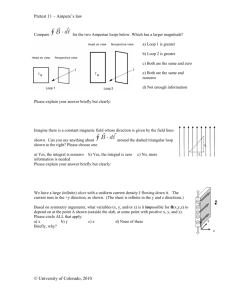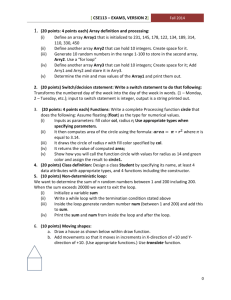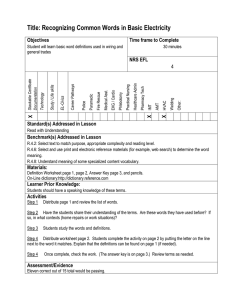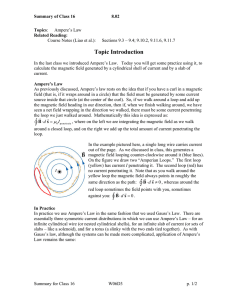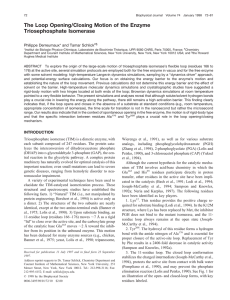Phy 132 - Assignment 8:
advertisement
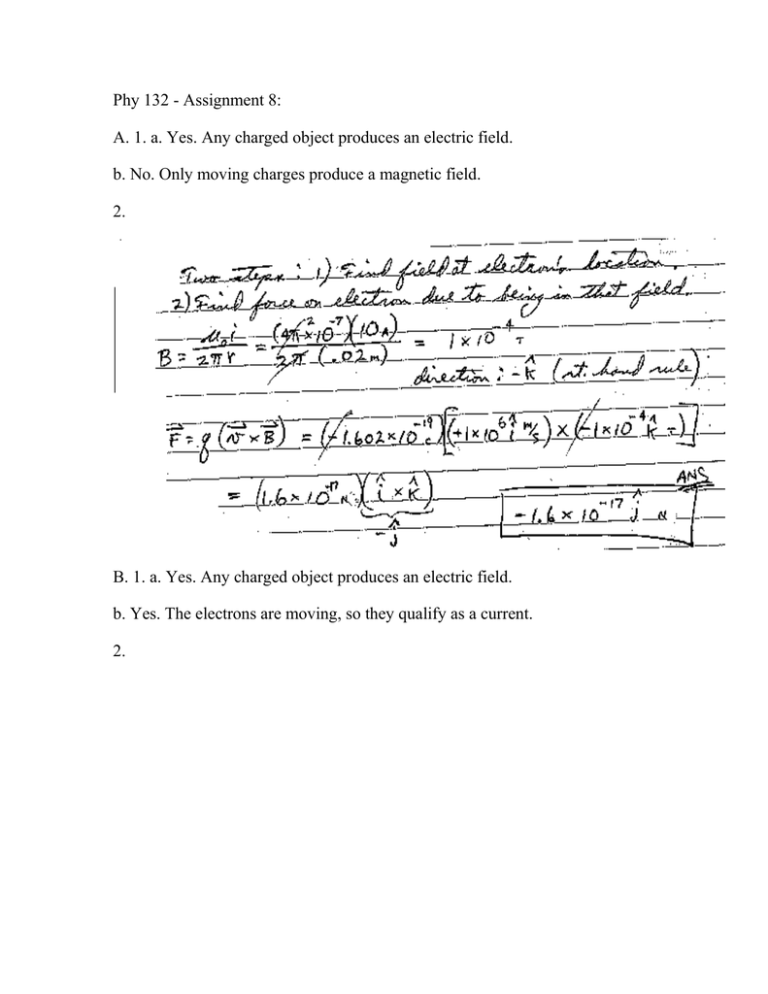
Phy 132 - Assignment 8: A. 1. a. Yes. Any charged object produces an electric field. b. No. Only moving charges produce a magnetic field. 2. B. 1. a. Yes. Any charged object produces an electric field. b. Yes. The electrons are moving, so they qualify as a current. 2. C. D. 1. a. No. The wire has no net charge. It contains equal numbers of electrons (which happen to be moving) and positive copper ions (with fixed positions). b. Yes. Due to the flowing electrons. 2. Use the path shown for Ampere’s law. (a rectangle in the xy plane.) Notice that B is constant along the vertical sides of the path because every point on those sides is the same distance from the sheet. To see that B has the direction shown, think of the sheet as a lot of wires, side by side. The fields of the wires would be as at left. (Right hand rule.) Notice that the horizontal contributions cancel, leaving you with a field that points up on one side and down on the other. E. Ampere's law: B(length of loop) = μo(total current through the loop) Because of the cable's circular symmetry, use a circle centered on the center of the cable, for the loop. Since every point on this loop is in an identical situation to every other point, B is the same all along it. This makes B ds reduce to just B s . The cosine factor in the dot product equals 1 in this case. B(2πr) = μo(total current through the loop) To find the field at point a, use a circle which goes through point a: B(2π)(.001 m) = (4π x 10-7)(1.00 A) (Only count the 1.00 A which is inside the loop.) B = .0002 T, or 200 μT ans. Direction: Point right thumb along the current, out of the page. Your fingers, as they go past point a, point toward the top of the page. To find the field at point b, use a larger circle which goes through point b: B(2π)(.003 m) = (4π x 10-7)(2.00 A) (With one amp coming out of the page, and three going in, that's a net current of 2 amps, into the page, through this path. I won't worry about the current's direction for a minute, until I'm figuring out the field's direction.) B = .000133 T, or 133 μT ans. Direction: Point right thumb along the net current, into the page. Your fingers, as they go past point b, point toward the bottom of the page. F. 1. 2.

